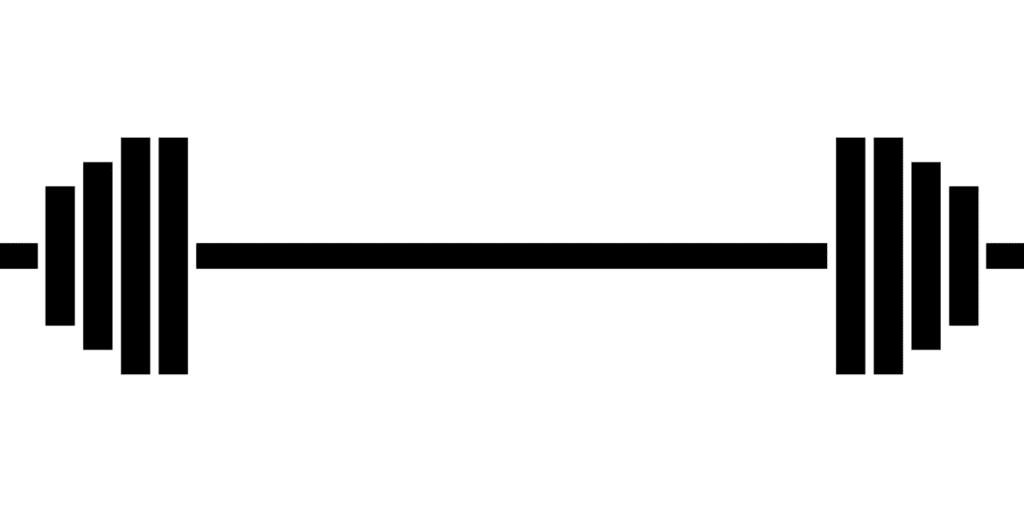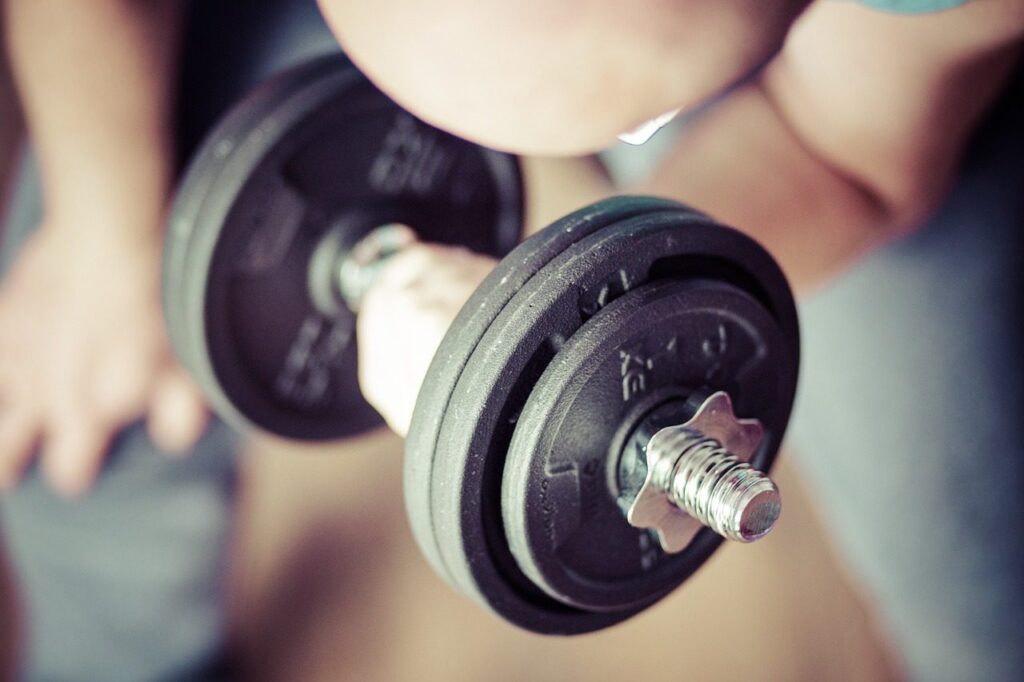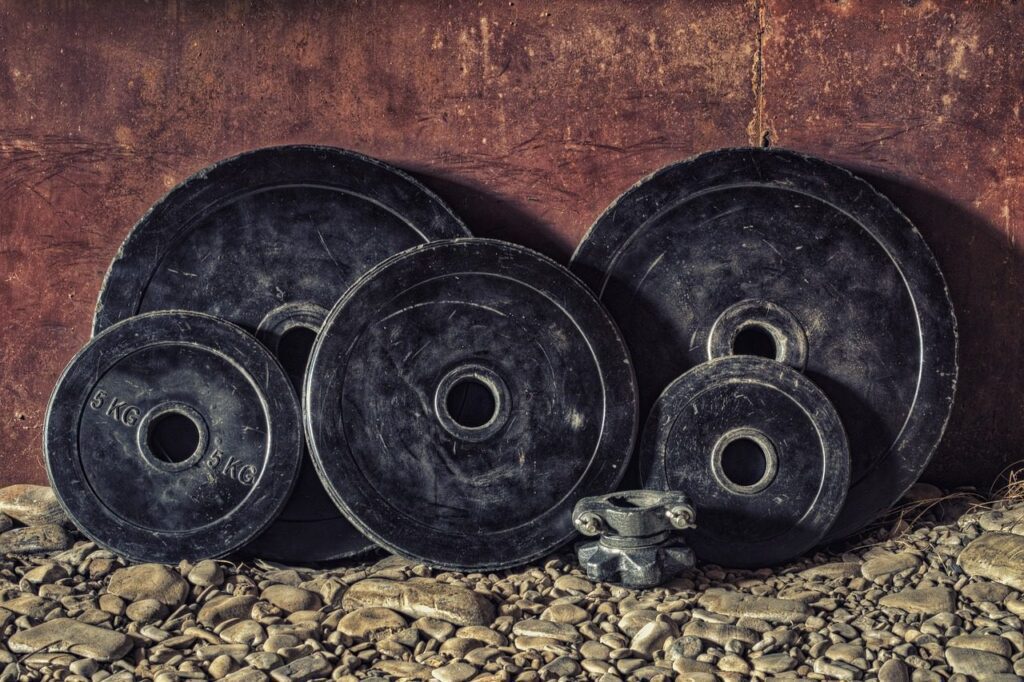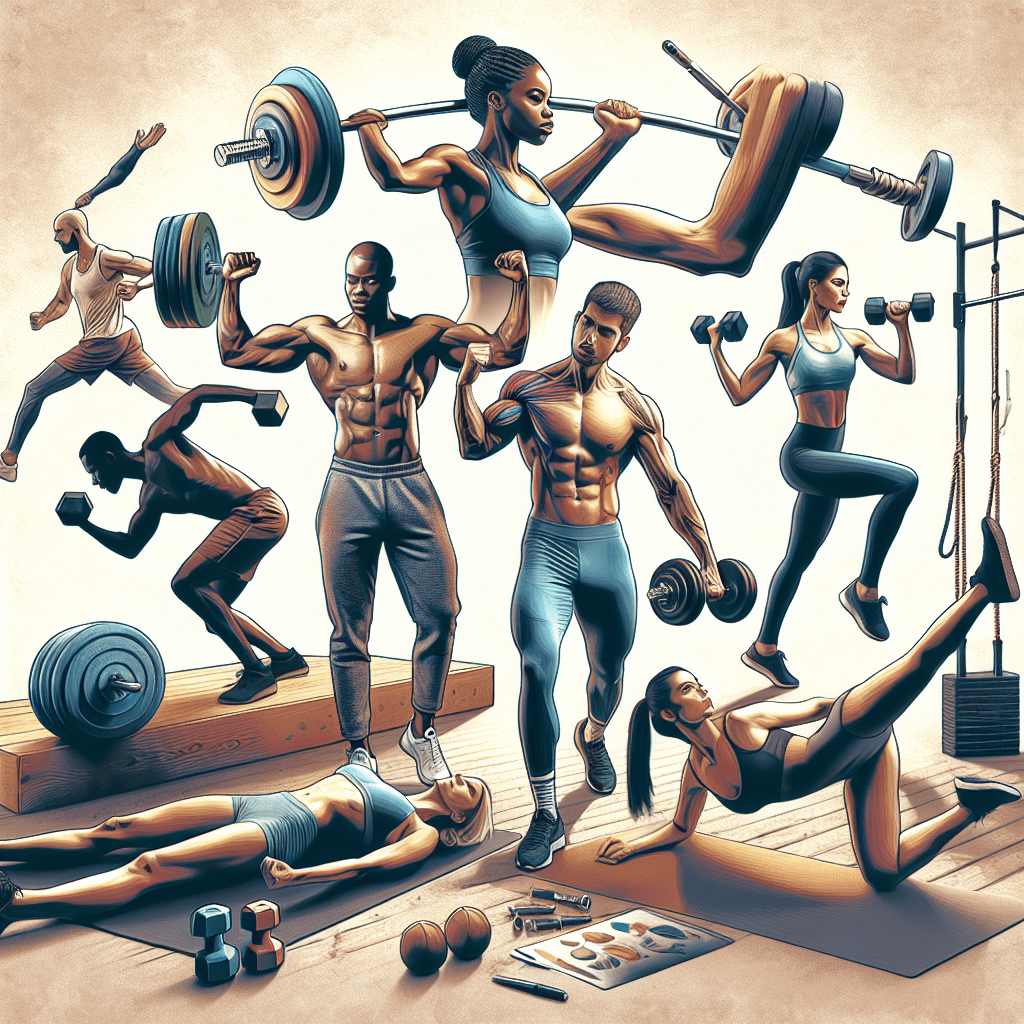You’re on a quest to build some serious muscle mass. You’ve hit the gym, you’re eating right, and you’re ready to take your workouts to the next level. But here’s the burning question: are there specific workouts tailored specifically for building muscle mass? Well, my friend, get ready to unleash your inner beast because we’re about to dive into the world of muscle-building workouts. Whether you’re a seasoned fitness enthusiast or just starting out, this article will guide you through the best exercises and techniques to help you pack on those gains. Get ready to feel the burn! Yes, there certainly are specific workouts that can greatly contribute to building muscle mass. Understanding the science behind muscle growth and the different types of exercises that impact muscle building is crucial in developing an effective workout routine. In this article, we will explore the importance of specific workouts for building muscle mass, the role of resistance training, the impact of compound and isolation exercises, the concept of progressive overload, finding the right training volume, different workout splits, intensity techniques, the importance of nutrition and recovery, supplementing your muscle building journey, and adjusting workouts for individual goals and body types.
Understanding the Science behind Muscle Growth
Before diving into specific workouts, it’s important to understand the science behind muscle growth. When you engage in resistance training, it creates microscopic damage to your muscle fibers. Your body then repairs this damage by fusing the muscle fibers together, resulting in an increase in muscle size and strength. This process is known as muscle hypertrophy.
How Different Types of Exercises Impact Muscle Building
Different types of exercises have varying effects on muscle building. Compound exercises, which involve multiple joints and muscle groups, are highly effective for muscle growth. They allow you to lift heavier weights and engage more muscle fibers, leading to greater overall muscle development. On the other hand, isolation exercises target specific muscle groups, enabling you to focus on individual areas that may be lagging in growth.

The Role of Resistance Training in Muscle Mass Development
resistance training, whether it’s with free weights, machines, or bodyweight exercises, is essential for building muscle mass. It creates the necessary stimulus to force your muscles to adapt and grow. By challenging your muscles with progressively heavier loads, you provide the ideal conditions for hypertrophy, leading to noticeable gains in muscle size and strength.
Compound Exercises: Maximizing Muscle Growth with Multi-Joint Movements
One of the most effective ways to maximize muscle growth is by incorporating compound exercises into your workout routine. Compound exercises involve movement at multiple joints and engage multiple muscle groups simultaneously. This allows you to lift heavier weights and stimulate greater muscle fiber recruitment. Some key compound exercises include the bench press, squat, deadlift, and overhead press.
The bench press primarily targets the chest, shoulders, and triceps muscles. It is a staple exercise for building upper body strength and mass. The squat is a full-body exercise that primarily targets the quadriceps, hamstrings, and glutes muscles. It is often referred to as the king of all exercises due to its ability to stimulate overall muscle growth. The deadlift is another compound movement that targets the posterior chain, including the back, glutes, and hamstrings. It is excellent for developing a strong and powerful physique. Lastly, the overhead press targets the shoulders, triceps, and upper chest muscles. It helps build strong, well-defined shoulders and upper body strength.

Isolation Exercises: Targeting Specific Muscle Groups for Growth
While compound exercises are crucial for overall muscle development, isolation exercises play a significant role in targeting specific muscle groups for growth. These exercises are designed to isolate and recruit specific muscles, helping you overcome any imbalances and achieve a well-rounded physique.
Bicep curls are a classic isolation exercise that targets the biceps muscles. By performing curls, you can specifically target the biceps, helping them grow and develop strength. Tricep extensions focus on the triceps muscles, which are often neglected in compound movements. Lateral raises primarily target the shoulders, specifically the medial deltoids. Leg curls isolate the hamstrings and help develop strength and shape in the back of your legs. Calf raises primarily target the calf muscles, which can be difficult to fully develop through compound movements alone.
Progressive Overload: The Key to Continual Muscle Mass Growth
Progressive overload is crucial for continual muscle mass growth. This principle involves gradually increasing the demands placed on your muscles over time, forcing them to adapt and grow. Here are some ways to incorporate progressive overload into your workouts:
- Gradually Increasing Weight: As your muscles adapt to a certain weight, it is important to progressively increase the weight you lift. This ensures that your muscles are constantly challenged and stimulated for growth.
- Adding Repetitions: Increasing the number of repetitions you perform with a given weight can also contribute to progressive overload. This helps build muscular endurance and encourages muscle growth.
- Reducing Rest Time: Shortening the rest intervals between sets can increase the intensity of your workouts and put greater stress on the muscles. This can lead to improved muscle growth and overall conditioning.

Training Volume: Finding the Right Balance for Muscle Hypertrophy
Training volume refers to the total amount of work you do in a given workout session, including the number of sets and repetitions. Finding the right balance of training volume is essential for muscle hypertrophy. Here are some factors to consider:
- Number of Sets and Repetitions: Performing multiple sets of an exercise with a moderate to high number of repetitions is generally effective for muscle hypertrophy. Aim for a range of 8-12 repetitions per set to target the optimal muscle growth range.
- Training Frequency and Rest Days: While training volume is important, it is equally crucial to allow your muscles to recover and grow. Incorporating rest days and adjusting your training frequency based on your individual recovery rate is crucial for muscle development.
- Using Techniques like Drop Sets or Supersets: Incorporating techniques like drop sets or supersets can increase training volume and intensify your workouts. Drop sets involve reducing the weight after reaching failure to continue the exercise, while supersets involve performing two different exercises back-to-back without rest.
Workout Splits: Organizing Training Sessions for Optimal Muscle Development
Workout splits refer to how you organize your training sessions throughout the week. Different workout splits can help optimize muscle development based on your individual goals and preferences. Here are some common workout split options:
- Full Body Workouts: Performing exercises that target all major muscle groups in a single workout session. This approach is suitable for individuals who prefer to train less frequently but want to ensure that each muscle group is targeted.
- Upper/Lower Body Workouts: Alternating between upper body exercises and lower body exercises in separate workout sessions. This approach allows for adequate recovery between muscle groups while still allowing for frequent training sessions.
- Push/Pull/Legs Split: Dividing workouts based on pushing exercises (e.g., chest, shoulders, triceps), pulling exercises (e.g., back, biceps), and leg exercises. This split allows for dedicated focus on specific muscle groups and ensures balanced development.
- Body Part Splits: Dividing workouts based on specific muscle groups (e.g., chest, back, shoulders, arms, legs). This split allows for more targeted training of individual muscle groups and is commonly used by bodybuilders looking to prioritize certain areas.

Intensity Techniques: Taking Workouts to the Next Level
Integrating intensity techniques into your workouts can help take your muscle-building efforts to the next level. These techniques involve manipulating variables such as time under tension, resistance, and rest periods to make your workouts more challenging. Here are some popular intensity techniques:
- Negatives: Emphasizing the eccentric phase of an exercise, where you focus on controlling the weight as you lower it. This can help recruit more muscle fibers and stimulate greater muscle growth.
- Forced Reps: Continuing an exercise with the help of a spotter or training partner once you have reached failure. This allows you to push beyond your usual limit and work the muscles even harder.
- Drop Sets: Performing a set of an exercise to failure and then immediately reducing the weight and continuing the exercise. This effectively increases the volume and intensity of your training.
- Rest-Pause Training: Performing a set to failure, taking a short rest break, and then continuing the exercise until reaching failure again. This technique can help maximize muscle fatigue and stimulate greater muscle growth.
The Importance of Nutrition and Recovery for Building Muscle Mass
While workouts are crucial for building muscle mass, nutrition and recovery play an equally important role. Fueling your body with the right nutrients and giving your muscles adequate time to rest and recover are essential for optimal muscle growth. Here are some key aspects to consider:
- Eating Sufficient Protein: Protein is a vital nutrient for muscle repair and growth. Aim to consume enough high-quality protein sources, such as lean meats, fish, dairy, and plant-based protein options, to support muscle building.
- Balanced Diet with Adequate Calories: To support muscle growth, it’s important to consume a well-balanced diet that provides sufficient energy and nutrients. Focus on incorporating whole, nutrient-dense foods and ensuring you’re in a slight calorie surplus to support muscle growth.
- Proper Hydration: Staying hydrated is crucial for overall health and muscle function. Dehydration can adversely affect performance and hinder muscle recovery. Aim to drink enough water throughout the day, especially during and after your workouts.
- Sufficient Rest and Sleep: Giving your muscles ample time to rest and recover is essential for muscle growth. Ensure you’re getting enough sleep, typically 7-9 hours per night, as this is when your body repairs and rebuilds damaged muscle tissue.

Supplementing Your Muscle Building Journey
In addition to a balanced diet, certain supplements can enhance your muscle building journey. While they are not necessary, they can provide additional support for your goals. Here are some common supplements used by individuals looking to build muscle mass:
- Protein Powders: Protein powders, such as whey protein, can be a convenient way to increase your daily protein intake. They are easily absorbed and can help meet your protein needs if it’s challenging to consume enough through whole foods alone.
- Creatine: Creatine is a natural compound that helps replenish a molecule called adenosine triphosphate (ATP), which is responsible for providing energy to your muscles during intense exercise. It can enhance muscle strength and power, leading to improved muscle growth.
- Branched-Chain Amino Acids (BCAAs): BCAAs are a group of essential amino acids (leucine, isoleucine, and valine) that play a role in muscle protein synthesis. They can help reduce muscle breakdown and promote muscle growth.
- Beta-Alanine: Beta-alanine is an amino acid that can enhance muscular endurance by buffering the build-up of lactic acid during exercise. This can help you push harder and train for longer periods, ultimately supporting muscle growth.
Adjusting Workouts for Individual Goals and Body Types
Lastly, it’s important to adjust your workouts based on your individual goals and body type. Different individuals may have different goals, such as bulking (muscle gain) or cutting (fat loss), and varying body types that may respond differently to training and nutrition. Here are some considerations to keep in mind:
- Bulking vs. Cutting: If your goal is to build muscle mass (bulking), you may focus on higher training volumes, a slight calorie surplus, and adequate protein intake. Conversely, if your goal is to lose body fat (cutting), you may focus on a calorie deficit while still maintaining adequate protein intake.
- Ectomorph, Endomorph, and Mesomorph Body Types: Different body types may require different approaches to training and nutrition. Ectomorphs may benefit from higher calorie intake and more frequent training sessions, while endomorphs may need to focus on calorie control and cardiovascular exercise. Mesomorphs are naturally inclined to build muscle and may respond well to a balanced approach.
- Tailoring the Program to Fit Personal Goals: Ultimately, it’s important to tailor your workout program to fit your specific goals, preferences, and lifestyle. Experiment with different training styles, exercise variations, and rep ranges to find what works best for you.
Conclusion Are There Specific Workouts For Building Muscle Mass?
In conclusion, specific workouts are indeed important for building muscle mass. By understanding the science behind muscle growth, incorporating compound and isolation exercises, implementing progressive overload, finding the right training volume, adopting suitable workout splits, utilizing intensity techniques, prioritizing nutrition and recovery, supplementing strategically, and adjusting workouts for individual goals and body types, you can optimize your muscle building journey and achieve noticeable gains in muscle size and strength. Remember to consult with a fitness professional or healthcare provider before starting any new workout or supplementation regimen, especially if you have any underlying health conditions or concerns. With dedication, consistency, and a well-designed workout routine, you can reach your muscle building goals and enjoy the benefits of a stronger and more muscular physique.